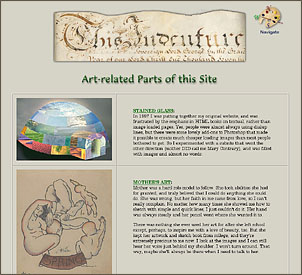that given by the Spanish master Luis Falero, in "The Planet Venus." This is
one of the pictures of what might be called his astronomical series, which so
materially assisted in establishing his reputation as a great imaginative artist. In
his hand the goddess becomes a gloriously voluptuous creation, dazzling in the splendor
of her perpetual youth and beauty, which radiate a light like an electric flame.
In "Summer" we have one of the beautiful ideal female types of Nathaniel Sichel, who
was introduced to the reader in part I. The Hierodules were one form of the
mythological type of enchantresses which we know in modern times as the Sirens.
As in all the representations of the legend in modern art, M. Edouard Rosset Granger
endows them with the beauty of perfect womanhood, whereas the ancient form given them was in one case that of
a mermaid, and in the other of half women and half birds. The artist is a Parisian, whose pictures in this field
have been numerous and very successful, both as works of art and in point of popularity.
In drawing, color, composition, and selection of subjects, his works show him to
have studied the school of Bouguereau, Boulanger, and Lefebvre to advantage.
The artist was, in fact, however, a student under Cabanel, Dubufe, and Mazerolle.
The Pierrette is a favorite ball masquerade with the modern Parisiennes, one
of whom is delineated, in character, by an appreciate brush in that of Alexander Jacques Chantron.
Chantron was born at Nantes and is a pupil of Picot. In
Back Forward
Chapter 3 Text
Alexandre Jacques Chantron
|
|





![]() Copyright © 2007, Mary S. Van Deusen
Copyright © 2007, Mary S. Van Deusen